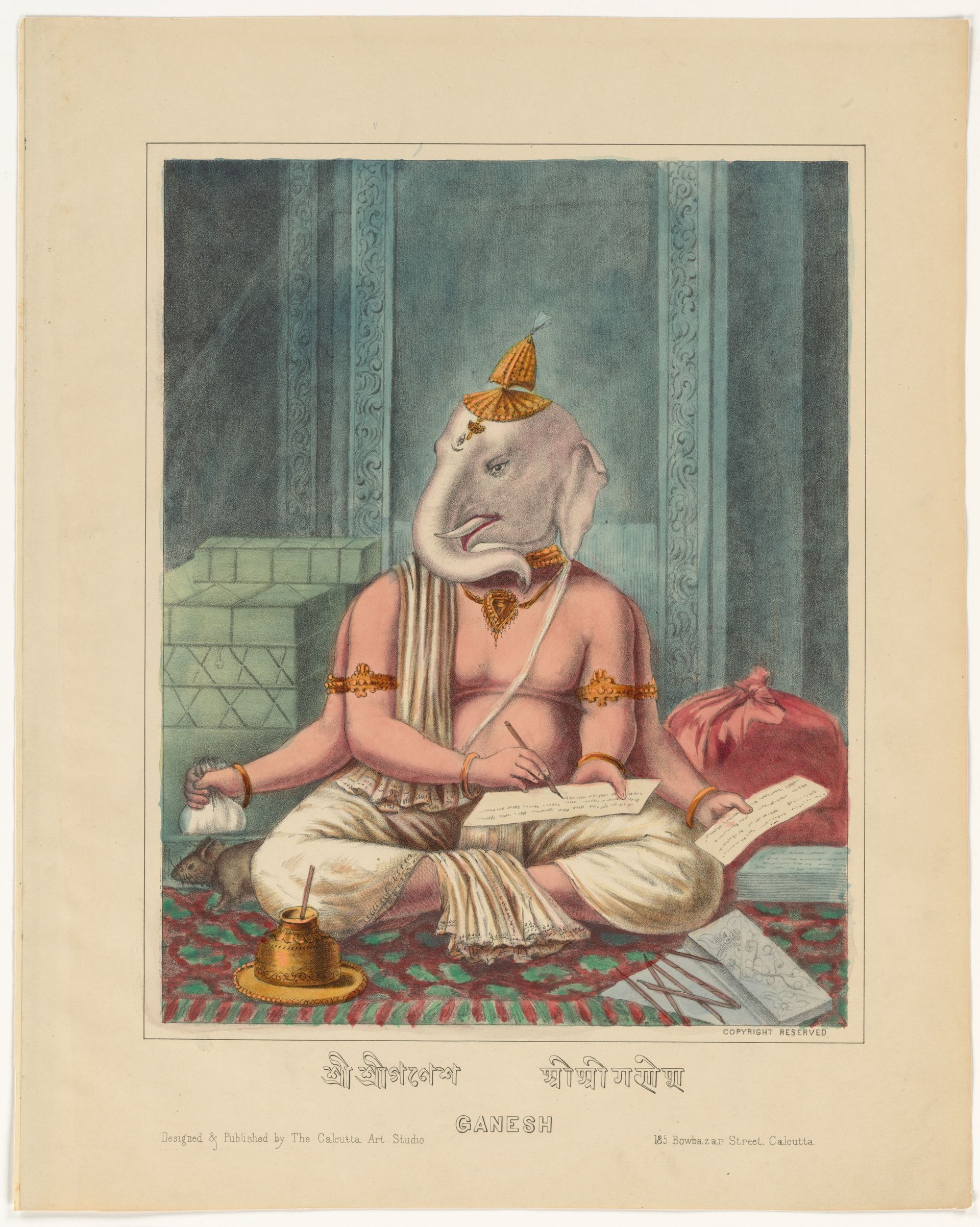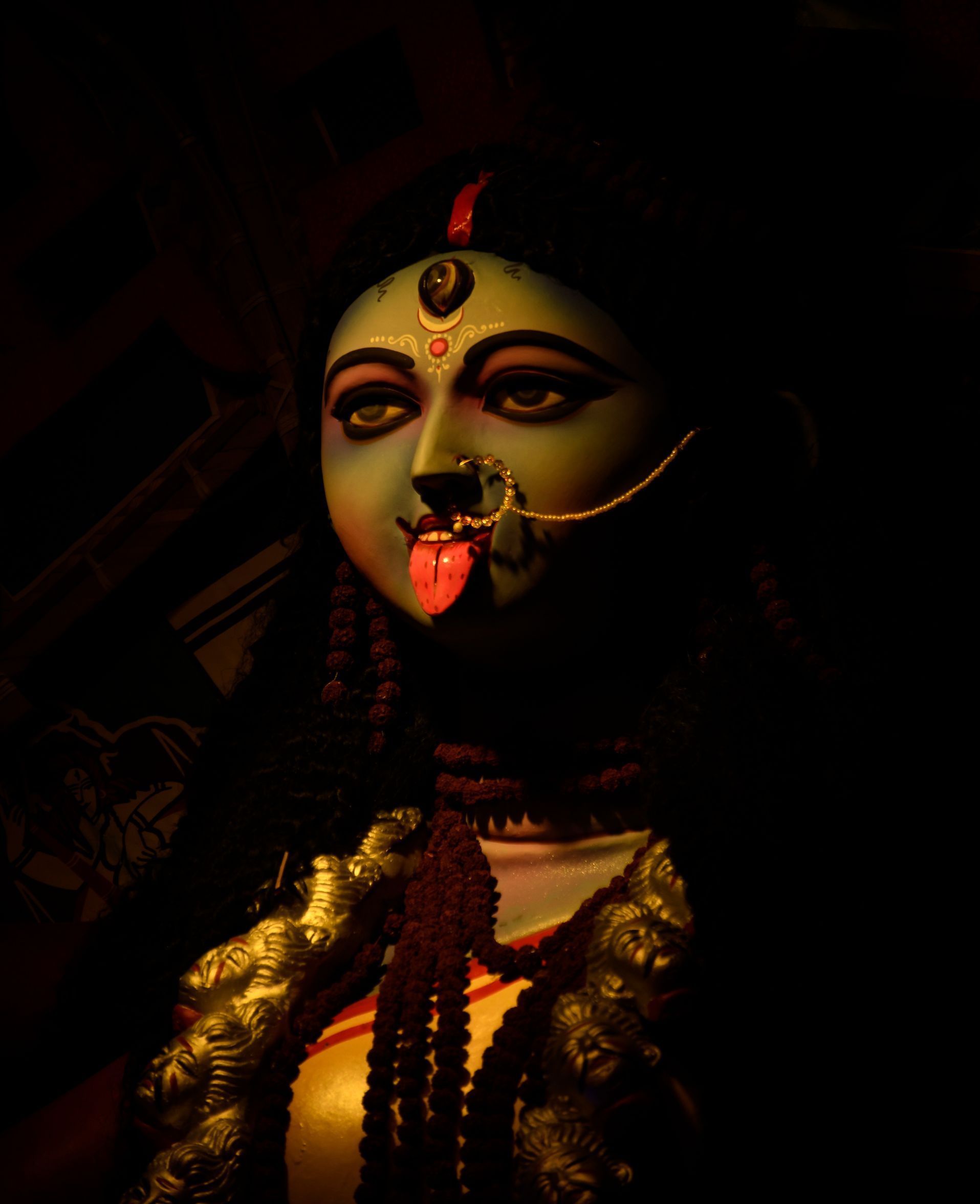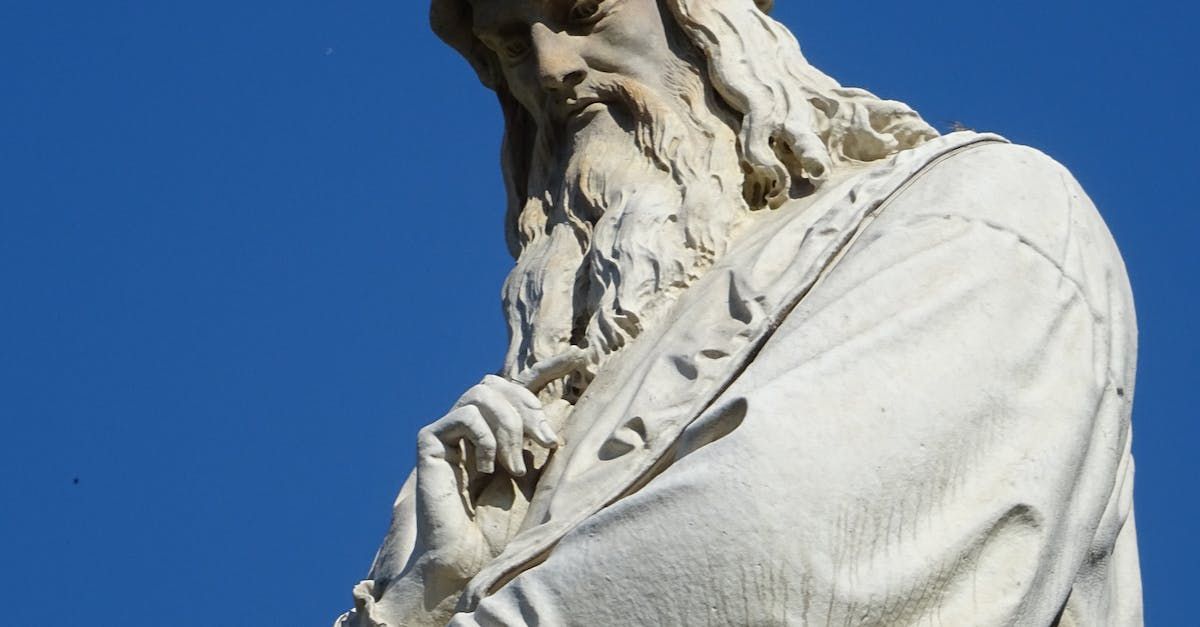MYTHOS | The Axis Mundi Archetype
MYTHOS
Ars Poetica #3: Axis Mundi, a factsheet for artists
Axis stems from Latin "axis," a shaft on which a wheel revolves. The first mentions of the word "axis" have been found in ancient Roman literature, and later on during the Renaissance in naturalist and architecture treatises.

THE COMPASS
One of the many symbols of cosmic axes indicating direction, vision, travel, true North
Early astronomers observing the sky and attempting to comprehend the laws of gravity, namely what holds the terrestrial globe suspended in space, surmised that an axle, invisible to the human eye, held the world (mundus) together and was responsible for earth's central position in the universe and rotation.
Over time, axis mundi's signification evolved and became more adaptable to a variety of intellectual, practical, and symbolic fields from STEM (Science, Technology, Engineering, and Mathematics) to the humanities, and the military, until its "ultimate abstraction" in astrology, mythology, and esotericism.
1.ANIMISM
Animists perceive Nature as the Spirit while inert and animated beings carry their own distinguishable essence.
Though pressured into Christianity through European colonialism, these diverse religious beliefs from Africa, Asia, Australasia, Northern Europe, and the Americas maintained a residual influence on modern societies through pagan revival (Asatru, Wicca, neoshamnism, New Age) until this day.
In animistic belief systems, animals play a role of interface, linking the invisible spirit in Nature to our own animal nature.
Animism is not an organized religion, rather an effect of certain religious experiences common to monotheism and polytheism.
Mainstream religions also contain animistic elements: the Christian/Muslim lamb and the demonic reptile; the Hindu god Ganesha, gatekeeper of spiritual realms from animality to divinity; and the Kundalini serpent power, giver of enlightenment.
To some extent, vegetarianism, which implies animal flesh is as sacred as human's is also animistic.
The animal acts as an axis mundi in most world creeds, symbolizing
divine descent into matter.
Animals and animism have semantic and etymological proximity; both stem from anima, spirit, soul and animalia, animated, alive.
2. AXIAL TILT

In astronomy, the axial tilt is the measurement of the angle of deviation of a planet from its axis of rotation (or natural satellite) to a line perpendicular to its orbit.
Geographers, explorers, and astronomers from ancient India, China, the Middle East, Greece, and Rome have measured Earth's obliquity with an increasingly stunning accuracy from the 12th century BC to the Renaissance.
The phrase Axis Mundi refers to a scientific concept, rooted in the observation of nature. Somehow it became a source of inspiration for Western spiritualists, intellectuals, poets, and artists.
3. CHAKRA
Many cosmogonies perceive the human body as an axis mundi, a vortex of flesh hiding latent divinity.
We are all familiar with the Hindu representations of the subtle body in a net of chakras, Sanskrit for wheel/circle, and nadis, channels of subtle energy surrounding the vertebral column.
The earliest mentions of chakras through writing and drawing date back to Tantra, a body of spiritual practices born in India during the 1st millennium CE. Contrary to the common belief, the aim of Tantra has nothing to do with endless sex.
Tantric practices (Sadhana) bring the practitioner to Yoga, a state of union of the individual soul (Atman) with the cosmic, divine absolute (Paratman), the result of detachment from bodily identification. Roughly speaking, Tantra means method. In Tantrism, human bodies contain the divine which awaits expression through them, irrespective of their gender. Therefore, the divine is both masculine (Siva) and feminine (Sakti).
The purpose of human life, Moksha, liberation, can only be attained through self-realization, the reunion of both divine aspects within the human body.
In authentic/original Yogic practices, only the **Guru triggers Saktipat, the ignition of a subtle energy within the human body (Kundalini).
This energy form travels from the root consciousness to the supreme one, leading the practitioner to Moksha (physical, mental, and spiritual liberation).
The Western caduceus represents the Roman-Greek and Egyptian deity Hermes or Hermes-Trismegistus, from which the name "hermeticism/hermetic" is derived.
A symbol of perfect health, this shaft (perhaps the vertebral column) surrounded with two interlocking snakes (probably nadis) may be a residual and degraded illustration of the self-realization process within the human body, its original significance lost over theosophy which intended to create a purely Western spirituality.
Even if the East gifted the world with all the spiritual leaders whose philosophies have been used to found dominant religions, the desire to be freed from human suffering is universal. Therefore, the theosophist's attempt may have been a mistake.
_______
** Guru is Sanskrit for "remover of ignorance" and "Jupiter." Only through lineage can someone become a guru.
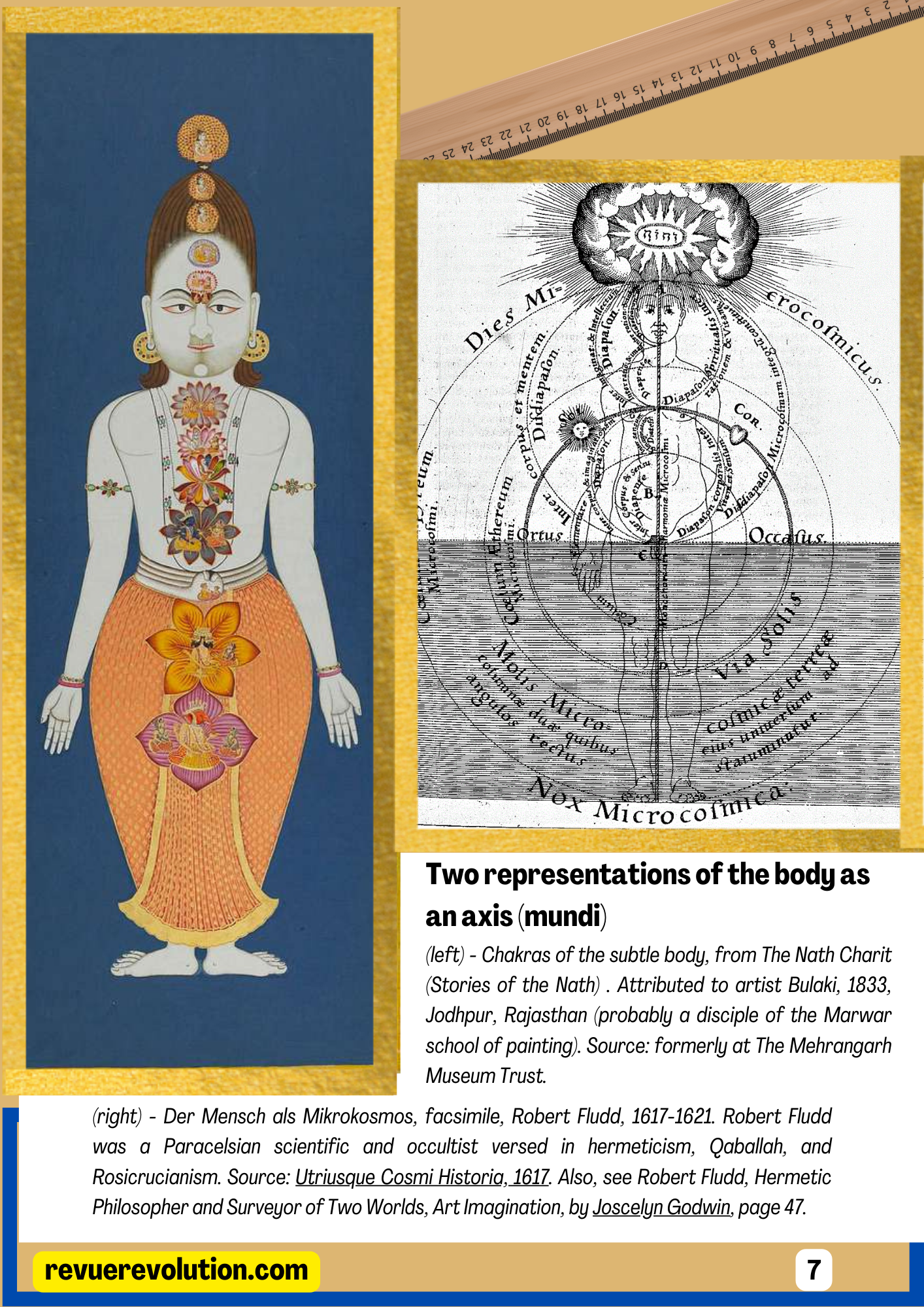
4. COSMOGONY
According to Mythologist Mircea Eliade, all religions rely on the existence of "doors" or spaces, inert or animated media to experience the sacred within the mundane. The interfaces facilitate travel from the highest planes of consciousness –what humans call the divine, invisible and permanent– to the lowest planes of consciousness, visible and immanent. So, as such, axis mundi refers to a
center, a vessel for transcendence, an outlet for transformation, a passage from one opposite to the other, the mastery of paradoxes.
5. ELIADE

Mythologist and historian of religion Mircea Eliade (1907-1986) turned axis mundi into a concept of comparative mythology, as he was researching world mythologies and religions and what their cosmogonies had in common.
6. HERMETICISM
A popular doctrine originating in ancient Greece and Egypt, hermeticism encompasses a variety of disciplines, from geometry and the mathematical sciences to alchemy.
Infused with symbolism, this philosophy may have flourished in Europe during the Renaissance (1400s-1500s), giving birth to initiatic mysticism in the West (freemasonry, rosicrucianism, and theosophy) and non-initiatic practices en marge of religion, like New Age philosophies.
Hermeticism mirrors Vedic philosophy, to which Alexander The Great certainly had access during his Indian Campaign (327-325 BC).
However, due to the influence of mainstream Christianity, hermetic occultists veered from Vedanta in a subtle, yet major way. The hermetic creed "as above, so below" introduces duality, an implicit separation between divinity (above, i.e the sky) and humanity (below, the Earth).
The spacial above/below dichotomy is absent from Vedanta in which God (Paratman) pervades space and time and is accessible through the human body.
7. LINGA
The Linga is a symbol of generative power, the cosmic pillar associated with the core elements (Mahabuta) of beingness, a sacred-geometrical abstraction of the Self.
The Linga is the visual representation of the process leading to creation and self-realization (enlightenment), not through sex, rather through the reunion of male and female polarities within the human soul.

In other words, intelligence, the ability to comprehend subtlety, is the result of perception refinement. Through refined discernment, the ability to sense what lies beyond appearances and the sexual analogy, any observer will find the Linga defies categorization.
It is visual representation of the process leading to creation and self-realization (enlightenment), not through sex, rather through the reunion of male and female polarities within the human soul.
The Lingam's existence and interpretation mirrors the artist's evolution. The artist striving to be a polymath must seek mastery of the senses, attain the highest layers of symbolism, and pass the visible, superficial, and temporary to reach the intrinsic beauty, truth, and permanence of all things.
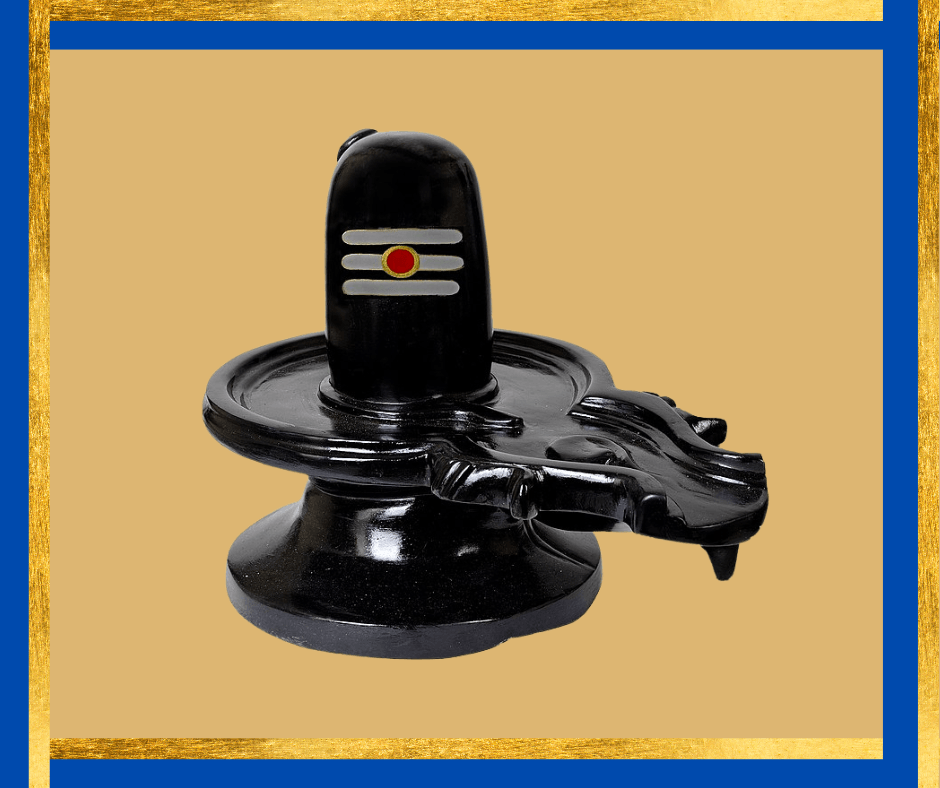
THE LINGA,
a devotional, esoteric & philosophical artefact
In Vedic symbolism, "male" and "female" describe the properties of divinity, not gender. These qualities are nirgun, i.e, the divine in non-form, and sagun, the divine formal.
Many Sanskrit canons mention the Linga in fascinating mythological contexts (Linga Purana), while metaphysical texts like the Schvetashvatara Upanishad, use this symbol as a basis of active and focused reflection to inquire the nature of self and reality.
13. A FACT SHEET FOR ARTISTS
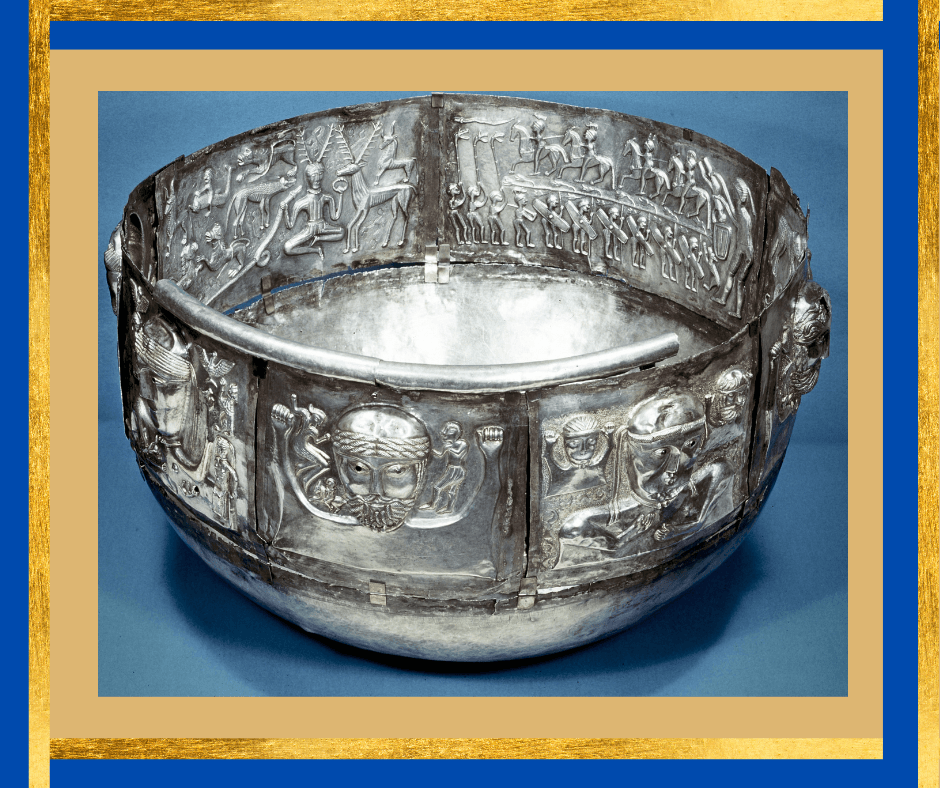
THE GUNDESTRUP CAULDRON
Carvings on the Gundestrup Cauldron (circa 150 BC-1BC, Denmark), a mysterious artefact with obvious historic, pantheistic, and aesthetic aims. Inside the cauldron, Cernunnos, a horned deity from Gaul, is seated in lotus posture, holding a torc in one's hand, a serpent in the other and facing his animal counterpart, the doe. In many cosmogonies, the deer is considered a divine animal, a symbol of transformation, an enchanted creature, or the archetype of the wandering mind seeking earthly pleasures and oblivious of its true nature: divinity.
8. MOUNTAIN

A NEOCLASSICAL MEMORIAL
LEFT. - A modern, contemporary hall of fame above the Danube River, Bavaria, named after the Norse Valhǫll, this neoclassical memorial praises outstanding historical figures from Germany. The architecture reflect Crown Prince Ludwig I of Bavaria's passion for ancient Greece and Italian Renaissance. His intention was to reunite Gothic, Vandal, Lombardic, Anglo-Saxon, medieval Dutch, Swedish and Russian peoples into one people.
RIGHT. - Marble busts at the Walhalla Memorial, among which Austrian composer Wolfgang Amadeus Mozart (1756-1791) (bottom center)
The obvious symbol of what peaks, mountains are considered the abode of divinity in various cosmogonies.
In humanity's collective subconscious, mountains represent labor and rebirth, as attested by the myth of Sisyphus (ancient Greece) or the archetype of the ascetic traveling to the Himalayas to meditate in a cave.
Mountains connote the archetype of the traveler, the hermit, and represent higher esoteric planes in Eastern cosmogonies (Mount Meru/Kailash as a gateway to enlightenment) and Norse mythology (Valhalla, likely to be a cave in heavens rather than a hall where dead warriors become immortal).
9. ROERICH

Artist, poet, essayist, archaeologist, mystic, philosopher, traveler, and public figure, Nicholas Roerich was a polymath. New York City shelters the Nicholas Roerich Museum, in a West Upper East Side brownstone.
Hosting artworks from the master and tokens of his travels, this small and elegant museum distinguishes itself by the overwhelming beauty of its collection.
The emblem of his creative philosophy, a sphere including a triad, represents the Banner of Peace and is subject to many interpretations to this very day.

THE ROERICH PACT, 15 APRIL 1935
21 nations of the Americas signed The Roerich Pact, also ratified by US President F.D. Roosevelt (center).
Aiming at cultural preservation, this treatise is still in effect, though neglected. For e.g, in 1965, Mosque 7, where Malcolm X used to preach, was bombed after his assassination. Also, the current gentrification in Harlem still causes a number of historical sites of that era to disappear.
10. TEMPLE
Temples are places of worship. Since their builders' intent is to connect humans to divinity (stability, eternity, permanence) through creative effort, perfect symmetry, and visual awe, and to establish a visible presence of the invisible on Earth, temples are a perfect emblem of axis mundi.
Whether atheists or not, we all get a sense of reverence in those majestic spaces which are considered sacred. Cosmogonies which evolved into religions display innumerable temples across the globe; stupas and pagodas from the Far East; fire temples, mosques, and synagogues from the Middle-East; and European churches of Catholic-Protestant tradition and Masonic temples.
Temples and churches are a place of choice to contemplate devotional art. In the United States, they are as much protected by the Roerich Pact as museums.
Nicholas Roerich was a Russian polymath and mystic who elaborated a fascinating philosophy of creativity with his wife, Helena, and advocated for Beauty as the embodiment of the Divine manifest.
In Yogic practices, Judaism, and the Christian doctrine (from which Catholicism swerved during the First Council of Nicaea), the human body itself is considered the ultimate temple of the Deity.
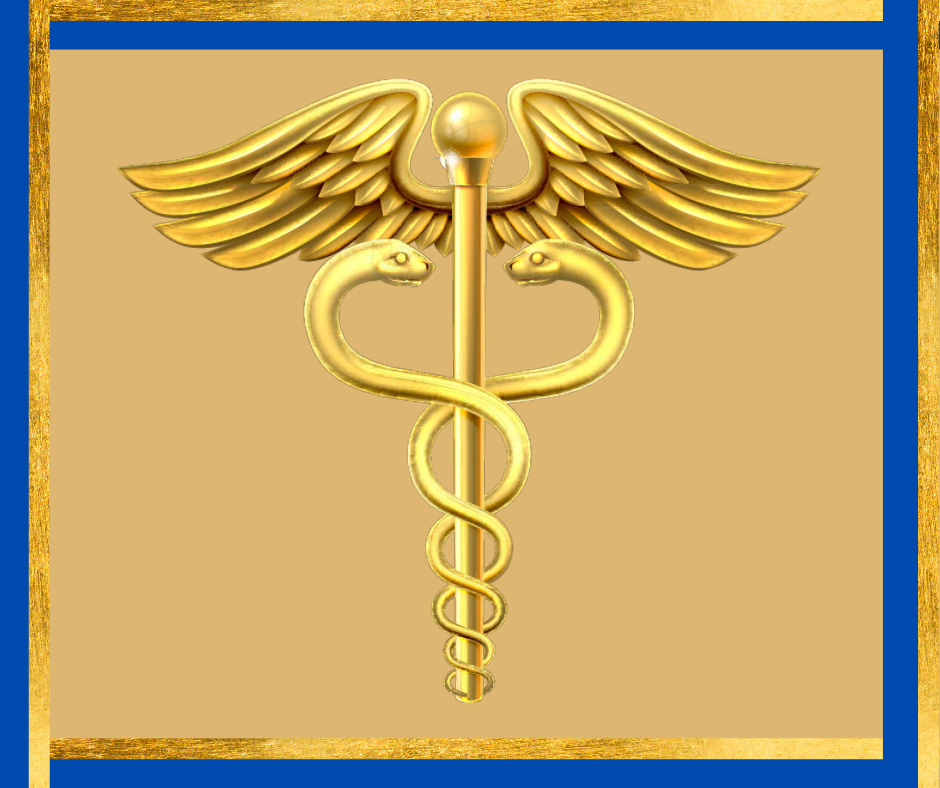
A CADUCEUS
The Caduceus as axis mundi, a schematization of the body as the interplay of subtle energies, a symbol of health, duality, and transcendence (inner evolution)
11. TOTEM
"Totem" stems from Ojibwe, a group of Algonquian dialects mostly spoken by indigenous people of southeastern Canada and neighboring US states.
Totems are hyerophanies, manifestations of the sacred which are local, i.e, associated with a clan, a family, a village or a tribe.
This localization of the sacred is paradoxical, as the experience of the sacred is universal, but not dissimilar to monotheistic religious practices whose artefacts are deemed unique and true. For e.g, for a Catholic, the Siv linga is as much pagan as the Muslim Hamsa or a voodoo totem.
Because the sacred is universal and unfathomable, any attempt to reduce its boundaries to local beliefs often results in conflicts.
Often despised as pagan, totems are hybrid axes mundorum, both animistic and religious. In their animistic form, they are the basis of worship in pre-colonial African religions, and aboriginal religions in Australia. However, any visible object used in an attempt to fathom the invisible is a totem.
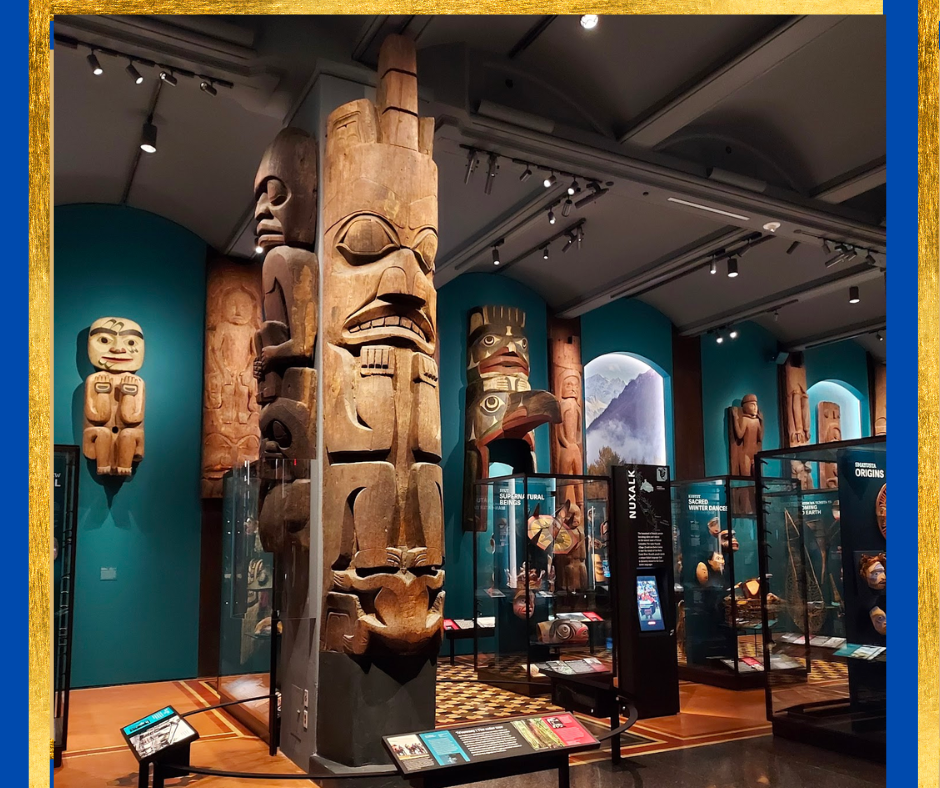
Photo: © M. Mobengo, 2022, NY, NY
THE TOTEM POLE, New York Museum of Natural History
A treasure of animism in the busy heart of Manhattan, the Totem Pole has been closed to the public for renovation for more than a year, partly due to the pandemic. The Totem Pole also displays stunning artworks by the Haida (British Columbia), a Native American tribe known for its craftsmanship, Kelly Cannel, her mother Susan Point, and Ben Davidson.
12. TREE
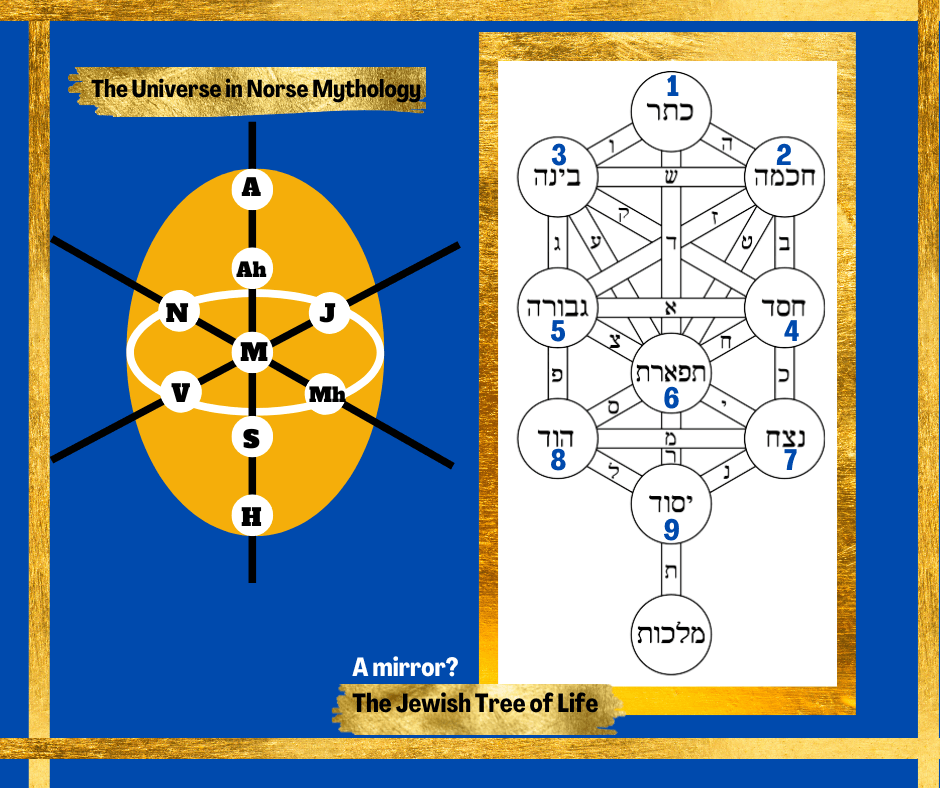
2 TREES OF LIFE MIRRORING EACH OTHER?
What is commonly known as Norse mythology comes from the mind of poets, Skald, the most prominent being Snorri Sturluson, Poet and author of the Prose Edda, a compound of Nordic spiritualism, Catholicism, and oneirism (circa 13th century CE).
The Poetic Edda, whose author and date of composition is unknown as poems were passed on orally (much like the Vedas who were transcribed later in Hindu history), constitute another source of Norse cosmogony and the canon text of Asatru, a modern revival of Nordic shamanism.
Norse cosmology describes Yggdrasil, the cosmic tree, has the holder of the 9 worlds:
- Asgard, home of the Gods, where Valhalla is
- Alf-heim, abode of the light elves
- Midgard, planet Earth, where humans reside
- Svartalfa-heim, land of the dwarfs
- Hell-heim, home of the doomed,
- Vana-heim, kingdom of the ancient gods, the Vanir),
- Niflheim, the world of mist
- Jotun-heim, realm of the giants; and
- Muspells-heim, the land of fire.
The Tree of life, or Sefirot Tree in the Kabbalah, a Jewish mystical tradition. Sefirah means "emanation." The Sefirot represent the ten attributes of the Infinite, Ein Sof, also reflected in the human body.
The Jewish Tree of Life is made up of 4 worlds, 10 energy centers, 22 paths, 3 negativities, and 3 pillars.
The 10 sefirot (above, in Hebrew) are The Crown (1), Wisdom (2), Understanding (3), Compassion (4), Strength (5), Beauty (6), Victory (7), Glory (8), Foundation (9) and Kingship (10). Knowledge (Daat) is the underlying, invisible emanation of everything.
Beyond its aesthetics, the Tree of life is an obvious existential map, teaching man what life is, how it unfolds, ends and how to navigate it.
Much like Hinduism, Kabbalah is an immensely rich spiritual tradition whose practices and philosophies have been obscured by celebrities and the New Age Movement.
The most widely distributed variant of the symbolism of the Centre is the Cosmic Tree, situated in the middle of the Universe, and upholding the three worlds as upon one axis.
Vedic India, ancient China and the Germanic mythology, as well as the "primitive" religions, all held different versions of this Cosmic Tree, whose roots plunged down into Hell, and whose branches reached to Heaven.
In the Central and North Asiatic mythologies its seven or nine branches symbolise the seven or nine celestial planes-that is, the seven planetary heaven.
We have not room here to enlarge upon the complex symbolism of this Tree of the World; what concerns us now is the part it plays in the "rites of the centre".
It may be said, in general, that the majority of the sacred and ritual trees that we meet with in the history of religions are only replicas, imperfect copies of this exemplary archetype, the Cosmic Tree.
Thus, all these sacred trees are thought of as situated in the Centre of the World, and all the ritual trees or posts which are consecrated before or during any religious ceremony arc, as it were, magically projected into the Centre of the World.
–Mircea Eliade,
Images and Symbols, Studies in Religious Symbolism
New Paragraph
This fact sheet is part of our Ars Poetica series. It aims at filling the gap in mythological, historical, and symbolic literacy artists often have.
If you aspire to adopt the polymath's spirit, you have to read. Not social media posts on philosophy, mythology, history, literature or art. Reading mentor texts, classics, is a must. There is no way around it. A polymath has a trained intellect and can handle complexity. Reading for knowledge extraction is an austerity. It requires discipline, persistance, and humility. Yes, being a polymath requires humility. Because to acquire knowledge, you have to acknowledge that life transcends you, life is complex. Complexity requires minute observation and study and there is no student without a teacher. Period.
Reading can be entertaining. However, a polymath does not read to be entertained. Polymaths read to acquire knowledge and infuse what they have learned in their creative practices. The method is the same whether you are philosopher, a poet, an artist: you have to treat your creative process as a science.
Beyond erudition and contests, this lexicon also intends to initiate artists and poets into the art of perception refinement and symbolic thinking, prerequisites to a blissful, healthy, and productive creative process.
Human literature brims with cosmogonies, treasure tales of creation: The Hebrew, Christian, and Muslim tree of knowledge; the Indian Samudra Manthan (churning of the ocean); Ginnungagap, the primordial void of creation in Norse mythology; Wah-kon-tah, the creator principle in Osage, Omaha, and Ponca tribes; the uncreated sun deity Ra of Egypt who multiplied himself; etc.
These grandiose stories fueled our collective and individual imagination in the past, but also inspired art, literature, civilizations, religions, existence. Cosmogonies contain infinite potential for nourishment and growth. As a creator of culture, not knowing them, not understanding what they convey, why they matter is a fault.
Without refinement of intelligence, there is no Art, no aesthetics, no Beauty, no Science, no Poetry either. Beauty is the artist's prima materia. Tales of the origins contain plenty.
While the artist's body will meet its end one day, Beauty remains eternal. If you need proof, think about masterpieces of the past in our modern museums. Think of all the ingenuity and financial resources involved over time to preserve them.
Also, be honest. If you perceive yourself as a polymath, ask yourself whether your art can stand the test of time. If the answer's no, strive to develop your intellect and symbolic thinking. No matter your discipline of choice, a polymath peaks.
ICONOGRAPHY: The MET Museum Collection (New York), The Museum of Natural History (New York), The Internet Archive, Wikimedia Commons, Canva.
All illustrations, artworks, and photographs published in
Ars Poetica 1 & 2 are in the public domain.
New Paragraph
OF MASTERS, TRADITIONS & BOOKS
Great reads which served as references for this crash course in symbolism & masters' perspectives to help you cultivate the polymath's spirit.
- Mircea Eliade,
Images and Symbols, Studies in Religious Symbolism
💲
- Nicholas Roerich, Beautiful Unity 👁
- The Nicholas Roerich Museum
is a must-see, a contemplative experience in the heart of the city
- William Blake, Jerusalem 👁
- The Shvetashvatara Upanishad (& The Upanishads in general)
- A good dictionary of symbols
{R} often recommends Adele Nozedar's
Illustrated Signs & Symbols Sourcebook
💲
or Le Dictionnaire des Symboles
(French)
👁
- Last recommendation :
- If you opt for abstraction, Haida art is a practice you definitely want to learn from. Enrich your artistic practice by looking to the folk arts of cultures you hold in high regard for inspiration. Immerse yourself in their literature and make an effort to connect with experienced artists from these traditions to glean knowledge and wisdom.
- Study the Renaissance.
Murielle Mobengo is editor-in-chief of {R}, and a poet. She founded a unique counseling practice to help poets and artists develop the polymathic spirit. Murielle inquires poetic existence, the origins of Poetry, and its proximity with Mythology, the religious sources of Art, and Philosophy. She composes in English, French, German, and has a fondness for Western ancient languages & Sanskrit. Passionate about symbols–which in her opinion and as a whole, express pantheism–, Murielle defines herself as a symbolist and a mythologist. Murielle Mobengo is a disciple of Kashmiri Shaivism, the non-dualist Eastern philosophy where Yoga originated.
Comment this article!
One rule: Be courteous and relevant. Thank you!
Revue {R}évolution




